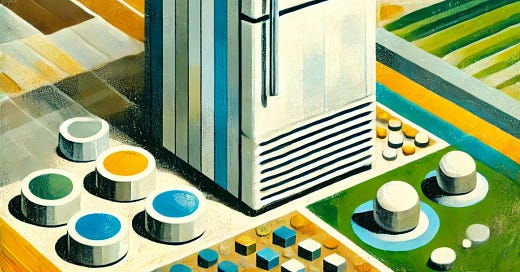Nur fünf Prozent der afrikanischen Haushalte haben eine Klimaanlage
Nur fünf Prozent der afrikanischen Haushalte haben eine Klimaanlage.
Der Wert stagniert seit zwei Jahrzehnten.
Die Bevölkerung wächst pro Jahr um gut zwei Prozent, das heißt es gibt auch jedes Jahr um etwa zwei Prozent mehr Klimaanlagen.
Trotzdem ist die Stagnation bei fünf Prozent der Bevölkerung ein Problem.
Dynamik zeigt sich hingegen bei der Kühlung von Lebensmitteln und Medizin.
For now, much climate-friendly innovation is concerned not with cooling people, but with ensuring that heat does not spoil their food and medicine.
Cameroon and Sierra Leone use solar-powered fridges to keep vaccines and other temperature-sensitive medicines stable.
Combined with battery storage, they stay cool even when there is no sun or alternative power supply.
Some freeze water into an ice lining, meaning they do not even need batteries.
Supplied to the Democratic Republic of Congo during the covid-19 pandemic, they can now be used for mpox vaccines.
Similar efforts are under way in agriculture, where up to 18% of harvests are currently lost to insufficient cold storage.
Some startups are offering farmers space to rent in solar-powered cold rooms.
SureChill, a British-based maker of solar-powered fridges, offers a cheap pay-as-you-go plan for the use of its $800 fridges, as long as farmers prove that they will generate income from their use.
Nur die Hälfte der Afrikaner:innen sind ans Stromnetz angeschlossen.
Klimaanlagen sind häufig nicht leistbar.
Andere Optionen:
Die Politik sollte für mehr Schattenplätze sorgen.
Mehr Geld für das Dämmen von Häusern.
Werden Dächer weiß gestrichen, reflektieren sie Sonnenlicht und Hitze zurück.




